 Knife and Tomahawk 1 is a 2 hour clinic being offered by Mr. Robert Nichols, Master certified Instructor at Union's United Tae Kwon Do Academy. He has more than 20 years martial arts experience, including 10 Black Belts from different schools and organizations. He is a 2 time inductee of the United States Martial Arts Hall of Fame, 2012 Instructor of the Year, and 2013 Ninjutsu Master. 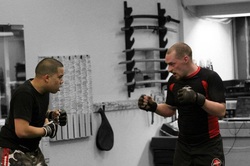 The course will cover the theory and fundamentals of using a fighting knife and tomahawk for striking, cutting, hooking, and trapping. The price includes a training knife and training tomahawk which are yours to keep so you can practice what you've learned in the clinic. Knife and Tomahawk 1 will be presented at Union's United Tae Kwon Do Academy at 2020 Morris Ave. Union, NJ 07083 on August 15th at 1pm and is sponsored by Black Bag Resources, LLC. Participants should wear comfortable street clothes and be prepared for an active 2 hours of physical training. Register here! (Registration closes August 5th!) 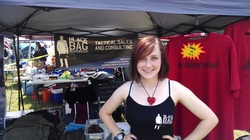 ION 2014 was an absolute blast! I saw lots of great friends and spent three days running the Black Bag Resources booth. The best part was helping folks set up their gear. On several occasions, I got the opportunity to lend my expertise and help customers build a vest or chest rig. I also helped lots of nice folks adjust, modify, or add to their existing gear. Overall feedback was great, and hopefully I hear back from a bunch of you about your future needs. To everyone who stopped by the booth to make a purchase or just to chat, I thank you. Black Bag Resources also released 3 new shirts this past weekend, with special ION pricing. Now those shirts are available to everyone! 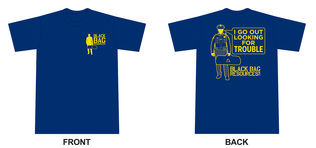 The 2014 Black Bag Resources T-shirt is here! This year's "bag man" T-shirt is LEO themed in honor of the men and women who wear the badge and quite literally "go out looking for trouble." Navy Blue t-shirts with yellow print. Available in sizes L, XL, and XXL. Other sizes available via special order. Price: $24 Order here! 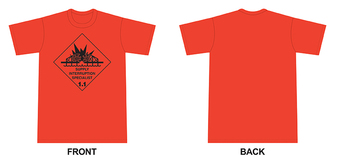 Last year we had the insanely popular 2013 "Problem Solver" shirt. This year, we're offering the 2014 "Supply Interruption Specialist" shirt, affectionately referred to as the 'Bridge Burner.' If you can interrupt your enemies' supply lines, he can no longer fight. Similarly, sometimes you just have to burn some bridges to accomplish your goals. Red shirt with black print. Available in sizes L, XL, and XXL. Other sizes available via special order. Price: $20 Order here! 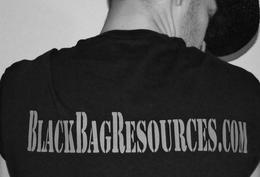 This is the Original shirt that started it all! This is the Original shirt that started it all! The third shirt is NOT available on our website! All the Black Bag Resources t-shirts are limited to a one year run. Once they are gone, they are gone forever. Because I often get requests for discontinued shirts, this year I am re-releasing the ORIGINAL "Who's Watching Your Back?" t-shirt! This time around it is a red shirt with black print, instead of the original black shirt with gray print. So, how do you get one? You have to come see me! These will only be available at events, classes, and face to face sales. Available in sizes L, XL, and XXL. 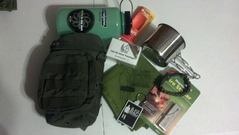 People often ask me to sell them "survival kits." I'm not a fan of the idea. Your survival requirements are far too personal and specific for a prefabricated kit. Invariably, something gets missed or left out, or, worse yet, the company selling the kit loads it with the cheapest junk they can get in an effort to maximize profits. It is my philosophy that you have to build your kit yourself. I can guide you, help you figure out your needs, but I'd be doing a disservice if I tried to do it for you. You need to have 100% confidence in every item in your kit. It isn't what you buy, it's what you learn, know, and do. There is no substitute. But you guys want packages, and as the saying goes - the customer is always right. Here's my plan: I'm going to start assembling product bundles. I'll put together packages of items that make sense and function well together, quality items I use myself, at a discounted price. These bundles will save you a few bucks, meet customer demand, and coincide with my philosophy that you have to build your kit yourself. Here's the first of these combos: Dave asked for a small bundle to cover fire and water. Obviously, I want you to add to this, but here's a bundle to get you started. (There's two of these combos ready to ship.) Combo includes: H2O Pouch, MOLLE compatible, insulated, with a small outer pocket to hold everything together. Nalgene Bottle, 32 oz, Glow-in-the-dark, wide mouth bottle can be used to protect the other items in the combo. Light My Fire Spork, bright orange so it doesn't get lost, this is my favorite camp chow utensil. Safe-Light PALight Survival flashlight, white LED, the best small light in an emergency. Check out the article here. Stainless Steel Cup, nests with the bottle and can be used to boil water. Magnesium Fire Starter, reliable fire starting capability. Paracord Bracelet, convenient multi use cordage, can be disassembled to make a sling or fire bow/drill. BBR Bandana, has a million uses, including pre-filter for your water. BBR Keychain, because they're cool, and I know you want one. Total value: $87 Black Bag Resources Price: $75 What should you add? Start with Tincture of Iodine, available at your local pharmacy, which can be used to treat wounds and treat (decontaminate) water the same way Iodine tabs would. A small "first aide" kit with some adhesive bandages and ointment is always handy. A small sample or travel sized bottle of hand sanitizer has multiple purposes. You can wrap some duck tape around the bottle or add a flat pack. A piece of tin foil can be used as a wind screen or a lid for the steel cup. A heavy duty zip seal bag can be used to catch or carry additional water and takes up very little space when empty. Make some fire starters from dryer lint or cotton balls and petroleum jelly. Finally, a piece of hacksaw blade as explained here. And there's no reason to stop there. As I've stated earlier, you know best what you need. You might even add this combo to a larger kit. ORDER HERE Basic Special Forces doctrine dictates that there are three simple questions to ask when recruiting a "Guerrilla Chief." I know. That's a pretty hefty opening line, so let's break it down. The mission of the US Army's Special Forces is to act as a force multiplier by recruiting, training, and deploying local or indigenous peoples to fight as allies in a specific theater. Because locals are most often fighting as guerrilla units, their leaders are referred to as "Guerrilla Chiefs," since it is often social leaders or tribal chieftains who take command positions within the newly formed guerrilla units. It is those same leaders that SF teams must recruit first to gain the alliance of the clan, tribe, or community group. SF teams must assimilate to local culture to gain trust, while guiding the locals towards their goal. What's the point of this article if you aren't recruiting for a rebel guerrilla force? You can apply these same concepts and the 3 questions in your daily life when negotiating deals and partnerships. Keep in mind that you want an affirmative answer to all three questions. 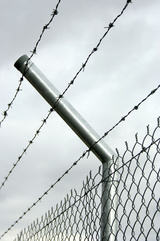 Question # 1: Do you have a secure backyard? To the SF team, the answer to this question immediately presents two pieces of information. First, whether or not it is safe to set up shop in this area. A secure rear means they won't have to constantly look over their shoulder for outside threats. It also means they can focus on the task at hand without the interruptions of fighting off those outside threats. Second, it tells them whether or not they are actually dealing with the head honcho of the area. There may be additional feuds in the area that are of little tactical concern to the SF team, other than ensuring they are working with the strongest group in the area. In your personal and professional dealings, you need to know whether it is safe to proceed and if the person you are working with can actually advance your goals. Are you dealing with a self-important mid-level blowhard or the boss? The boss can actually effect changes and make decisions. The boss can also protect your six from other competitors or detractors. Can they provide you with real insight on how to achieve your goal? If not, they aren't providing you with the rear security you need to succeed, because they aren't really in command of their "backyard." 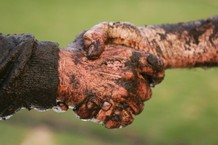 Question #2: Do we have a common goal today, recognizing that tomorrow may be different? Alliances are temporary. Accept it. The SF team knows that today they are working with tribesmen to secure intelligence on an enemy. In the future, they may return to fight those same tribesmen to stop their drug trade. Larger goals and politics will shift, so the SF team focuses on one objective with their current ally. They foster the relationship based on that goal and steer all activities back to it's success. They also understand that they might have to befriend some unsavory characters to achieve the objective, and will tolerate what might otherwise be unacceptable. Likewise, you can't expect to be in 100% agreement with your allies all the time. The key in personal and professional dealings is to avoid burning bridges unnecessarily. You might partner with someone on a project this month, then offer competing proposals next month. Then, in two months you need their expertise on a third project. Remember to foster the relationship and reinforce that success is mutually beneficial. 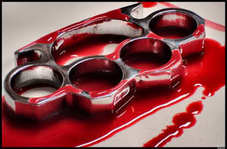 Question #3: Are you willing to kill someone? Whether referring to the SF team or your personal and professional dealings, an affirmative answer to this question will let you know that your ally is fully committed to achieving the goal. The obvious difference is that this question may be a literal one for the SF team, but is a figurative one for you. Either way, you're looking for an affirmative commitment to success, despite potential hardships or personal conflicts. You need to know that your ally is willing to do what it takes, so be certain that they are sincere in their commitment. Expect some hesitation, because it might not be (and in some cases should not be) an easy decision to make. But, if their answer is negative, end the partnership immediately. By not committing to success, they are committing to failure, or at least not investing in success. If your ally isn't invested, they will have nothing to lose from your failure, so there may be little motivation to succeed. Think of it as the carrot and the stick- the carrot represents the benefits success, and the stick represents the personal investments lost in failure. Get them invested. Get them committed. Succeed. I did a few brief videos showing size and fit of a few Condor brand Plate Carriers for a Law Enforcement customer. She's putting together an "Active Shooter" rig, and wanted a little more information than she was getting from the manufacturer- some of those elements you only discover when handling a product. She's looking for a balance of protection and speed in putting the rig on. It will mostly ride in her trunk, unless the situation arises where she needs the added Level III protection offered by the AR500 Armor plates she purchased from Black Bag Resources a few weeks ago. In short, she needs a quick rig for one of the worst SHTF scenarios an officer might face. It's my job to help her build the rig she needs, so this was a great way to get her the info she wanted even though she's a few hours away. I'm sharing them publicly just in case there's a nugget of info that helps someone else. Keep in mind, we're discussing these items for a specific purpose for a specific customer. Some of the issues I point out in the videos won't be issues for other people or other applications. Grab some popcorn, and enjoy the show! Ammunition supplies at stores are finally starting to normalize. That's good news, but prices are still inflated.
So what have we learned from the recent shortage? Conventional knowledge pretty much went out the window as soon as supply started to dry up and shelves went bare. Most of the guys I know had argued in favor of only keeping firearms chambered for NATO calibers. It seems that the 9 mm, 45 ACP, 5.56/2.23, 7.62 x 51/.308, and 12 gauge were the first things to disappear. (This was not my personal philosophy, and I was glad to see .40 S&W, 7.62x54R, and 7.62x39 price and availability fluctuate very little in comparison.) The biggest surprise probably came when the .22 LR vanished from shelves. How many articles were written or conversations had that the .22 would be in limitless supply because it is the most common target, plinking, and recreational round available? Conventional wisdom told us there was no possible way we would ever have a shortage of .22. Boy oh boy, were we wrong! I'm not even going get into prices on some of the other rounds but we saw a $17 box of .22 long rifle go all the way up to $120 in the course of three short months, thanks in no small part to shady dealers like Cheaper Than Dirt and unscrupulous "ammo scalpers" who looked to make a quick buck. (CTD will never see another penny of my money!) We can get into several theories as to why supply and demand shifted the way it did or why the supply dried up so fast but the bottom line is if you hadn't stocked up on ammo prior to this rush you're feeling the shortage more than anybody else. I'm curious to hear from any new marksman out there who recently started purchasing firearms and ammunition how they've budgeted for not only the price of the firearm but also the over inflated price of the ammunition. Unfortunately, I suspect most new folks coming into the firearms culture have no idea they're being overcharged. The short lesson is this: The Mosin and SKS continued to eat well, but the AR and Ruger 10/22 ate very lean. Be careful with "Caliber Consolidation", because you might be surprised with what disappears when times get tight. And if you haven't started backing up your ammo supply, maybe you need to rethink some purchases. Black Bag Resources, LLC is proud to offer AR500 Armor products to our customers. AR500 Armor produces level III steel trauma plates capable of stopping rifle rounds up to 7.62x51/.308 caliber. Unlike ceramic plates, steel plates aren't easily damaged by day to day use and abuse. The best part is AR500 Armor plates are affordable! Ceramic plates start at about $300 each, but you can get a basic AR500 10"x12" Advanced Shooters Cut Plate for as little as $65 (at the time of this writing). AR500 Armor offers plenty of features and options to suit your specific needs, including various sizes and flat or curved plates. Because steel plate armor deflects and breaks incoming rounds and doesn't "catch" the bullet like soft armor or ceramics do, AR500 Armor offers a Line-X base coat build-up to contain spall/fragmentation. This additional coating is offered for an extra fee but is very effective at capturing 100% of spall/frag. Black Bag Resources, LLC strongly recommends this option when ordering your armor. Call Black Bag Resources, LLC to place your order! 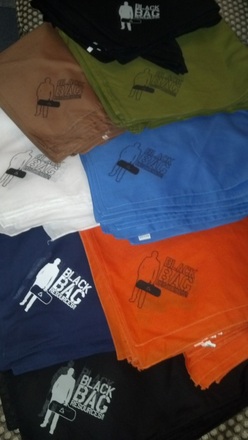 The new 2013 Black Bag Resources Bandanas have arrived! ORDER HERE The latest batch are 27" x 27" of 100% pure cotton with the logo printed on one corner. So what's the big deal? Cotton bandanas are a handy everyday carry and survival item. There's a reason the Boy Scouts include a neckerchief as part of their uniform. The BBR Bandana can be used as/for:
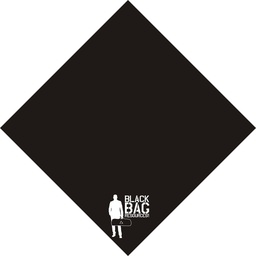 The unobtrusive logo is on only one corner.
 We also have the original 24" x 24" BBR Bandanas. The list goes on and on and is only limited by your imagination and skills. You can tie them and twist them, or even sew pockets in them to suit your needs. I carry one everyday, and I'm constantly finding new uses for it. Some uses are mundane. Some are adventurous. Some are only for the BOLD! >>> ORDER HERE Black Bag Resources offers NRA Certified Firearms Instruction for Pistol, Rifle, and Shotgun. NRA courses provide education on safe handling and storage of firearms, proper use of firearms, and marksmanship skills. Each class includes both classroom instruction and live fire practical exercises. Certificates are awarded upon completion and every class with Black Bag Resources includes qualifying for the NRA/Winchester Basic Practical rocker. We have velcro backings put on all Basic Practical rockers, so when you are awarded the rocker, you can immediately attach it to your gear, jacket, pack, or case. This is Hurricane preparedness week (May 26-June1) on the East Coast. If you're here in NJ, you're probably still hearing about the repairs from Sandy, or you're down the shore still IN the recovery. June is considered Hurricane Season here, so let's go over and review some of your basic hurricane preps:
Following the Black Bag Resources method, we start with our threat assessment by defining the threat and it's related problems. What is a hurricane? A hurricane is a tropical storm with a low pressure center and a spiral arrangement of thunderstorms that produce strong winds and heavy rain. Some of the problems a hurricane may cause (and we will have to solve) include wind damage, water damage, power loss, and interruptions in the supply chain. Let's break down and solve each problem: Wind Damage The Problems: Hurricanes bring high wind speed that can cause damage by knocking down trees, lifting roofing, and blowing loose items. The Solution: Now is a good time to do some outdoors maintenance. Trim dead tree limbs, clean up the yard, check the roofing for any obvious issues, make sure storm doors and shutters are solid and secure, etc. If you are in an area where this is an extreme risk and you need to board up, now is the time to measure and cut boards so they will be ready for the storm. I recommend numbering them so you know which boards go to which windows to save time in the event you do have to board up. Now is a good time to stock up on duct tape for taping windows. (Taping windows is another way to keep broken glass from going everywhere should a window get broken.) Right before the storm, bring patio furniture and garbage cans inside to prevent them from becoming projectiles and causing damage. Generally speaking, if you can lift it, a storm can throw it. Also check rain gutters and awnings to make sure they are secured firmly. If you have solar panels, check the mounts, racks, and fittings and replace or repair them as needed. Water Damage The Problems: Hurricanes bring heavy rains which can cause top down water damage as well as bottom up water damage from flooding. The Solutions: Address top down water damage by checking for leaks. Look for missing or damaged roofing, check the attic and ceilings for watermarks, check windows and weather stripping, and clean out rain gutters to ensure they move water as they should. Address minor bottom up water issues and flooding by checking sump pumps and french drains, and water proofing basements. If you know your home is prone to minor flooding issues (for example: 2-3" of water in the basement), move items out of low areas in your home to keep them from getting water logged or damaged. In areas prone to severe flooding like Manville and Bound Brook, review your evacuation plans. Plan primary and secondary evacuation routes and destinations. If you plan to go to a friend or family member's home, review and discuss the arrangements with them now, not when you are on the way there. Check your Bug Out Bags/Evacuation Kits/Get Home Kits and replace anything that's been consumed or used up. Flood waters can also move contaminents into the water supply. That means drinking water will need to be decontaminated, or replaced with clean, stored water. I recommend having both means to purify water AND storing water for drinking and brushing your teeth. Power Loss The Problems: Electrical power outages caused by hurricanes may be minor and temporary, or, as we saw with Sandy, may be severe and last for extended periods. Lack of power will cause many electronic devices to stop working. The Solutions: Start by preparing for the short term. Make sure you have flash lights and candles staged where you might need or use them, including fresh and spare batteries for the lights and lighters or matches to light the candles. It's no fun hunting for things in the dark. Use caution with any open flame, and keep fire extinguishers handy as well. Now is a good time to tidy up inside your home, too. Is there anything that might become a trip and fall hazard if the lights suddenly went out? Keep in mind how many things use electricity both inside and outside your home. If the power is out, ATM machines, gas pumps, and credit card machines will not work. Street and traffic lights might be out. Have some cash and fuel (if possible) on hand. At minimum, fill your vehicle's gas tank prior to the storm. In addition to your vehicle's radio, have battery operated emergency radios on hand to stay informed. Prior to the storm, charge cell phones fully, but be prepared that they might not work if the cell towers go down. Once you have the basics covered, consider preparing for longer term outages with either a generator or battery bank to power larger appliances, sump and well pumps, and any necessary medical equipment in your home. Interruptions in the Supply Chain The Problems: Most retail locations, including grocery stores, only maintain about a three day supply of goods which is restocked by regular deliveries. In the event of a severe hurricane, that resupply might not come as scheduled. It could be days or even weeks late depending on various issues. The Solutions: Stock up. Start by taking inventory of every consumable item in your home. Your first goal is to maintain a three day supply that would allow you to have everything you need with out going to the store. This should include food, water, medications, toiletries and hygene items, cleaning supplies, first aid items, fuel if possible, batteries, etc. Once you have a three day supply, extend to a week, then a month. Try to keep your food supply as close to your normal diet as possible by rotating what you store and including it in regular meals. I don't advocate storing lots of freeze dried or dehydrated foods if you aren't used to eating those things, but there are a few exceptions. (I like to keep dehydrated milk, for example, because milk, eggs, and bread all disappear from shelves pretty quickly. Milk does not have a long shelf life, so this provides a good back up.) Your specific dietary and medical needs should also be taken into consideration, and addressed accordingly. Be sure to include backup means of preparing your food in your plans. Small camp stoves are an option, but be sure to have adequate ventilation when using propane. Your plans and preparedness items should give you an improved feeling of security. If you notice that you are feeling stressed in your efforts because you can't meet all your needs, consider working with friends and neighbors to bridge gaps in your respective plans and maximize effectiveness. Keep in mind that you are part of a community and that should not change in the event of a disaster. Conversely, if you feel that you are set up well but your neighbors are not, encourage them to take steps to be ready. Finally, sheltering in place is always my first choice, but when the time comes to evacuate- do it without hesitation. Be ready with your evacuation kit/Bug Out Bag and know your evacuation route and destination, as well as secondary routes and destinations. This is in no way comprehensive of everything you should do to prepare for hurricanes. There is always more, but if you get started on the things we've discussed in this article, you will start to notice other action items and steps you can take to improve your specific situation. Feel free to comment here or on Facebook, or send emails with comments and questions to [email protected]. |
Black Bag Resources Blog
News, projects, products, and tips from the owner. Archives
September 2022
Categories
All
|












 RSS Feed
RSS Feed